- Clone
- TU27/Tubulin (See other available formats)
- Regulatory Status
- RUO
- Other Names
- Tubulin, beta 2A
- Previously
-
Covance Catalog# MMS-410P
- Isotype
- Mouse IgG1, κ
- Ave. Rating
- Submit a Review
- Product Citations
- publications
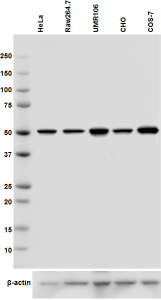
-

Western blot analysis of cell lysates from HeLa (Human), Raw264.7 (Mouse), UMR106 (Rat), CHO (Hamster) and COS-7 (Monkey) using β-Tubulin Mouse primary antibody (clone TU27/Tubulin, 1:1000 dilution) and HRP Goat anti-Mouse secondary antibody (Cat. No. 405306, 1:3000 dilution). Direct-Blot™ HRP anti-β-actin (Cat. No. 643807) was used as a loading control (1:8000 dilution). -

Western blot of purified anti-β-Tubulin antibody (clone TU27/Tubulin). Lane 1: Molecular weight marker; Lane 2: 30 µg of Drosophila head lysate; Lane 3: 30 µg of Drosophila S2 (embryonic) cell lysate. The blot was incubated with 1 µg/mL of the primary antibody overnight at 4°C, followed by incubation with HRP-labeled goat anti-mouse IgG (Cat. No. 405306). Enhanced chemiluminescence was used as the detection system. -

Western blot probed with MMS-410P anti-Tubulin antibody (TU 27) Lane1 : Molecular weight ladder; Lane2: Rat Brain Extract; Lane 3: Rat Brain Extract Lane 4: HeLa cell lysate -

HeLa cells stained with polyclonal Giantin (green) used at 1:500 and monoclonal TU27 (red) used at 1:2000.
| Cat # | Size | Price | Quantity Check Availability | Save | ||
|---|---|---|---|---|---|---|
| 903401 | 250 µL | 313€ | ||||
Tubulin is ubiquitously expressed and is the major constituent of microtubules, which are composed of alpha and beta tubulin heterodimers. There are five distinct forms of tubulin: alpha, beta, gamma, delta, and epsilon. Beta tubulin has multiple isoforms that are expressed in mammalian tissues and localize to different places in the cell.
Product DetailsProduct Details
- Verified Reactivity
- Human, Mouse, Rat, Non-Human Primate, Hamster, Drosophila
- Reported Reactivity
- Other species
- Antibody Type
- Monoclonal
- Host Species
- Mouse
- Immunogen
- This antibody was generated against taxol-assembled microtubules.
- Formulation
- Phosphate-buffered solution + 0.03% Thimerosal.
- Preparation
- The antibody was purified by affinity chromatography.
- Concentration
- 1 mg/mL
- Storage & Handling
- The antibody solution should be stored undiluted between 2°C and 8°C. Please note the storage condition for this antibody has been changed from -20°C to between 2°C and 8°C. You can also check your vial or your CoA to find the most accurate storage condition for this antibody.
- Application
-
WB, ICC, IHC
- Recommended Usage
-
Each lot of this antibody is quality control tested by Western blotting.
The optimal working dilution should be determined for each specific assay condition.
• WB: 1 µg/mL (1:1000)
• IF: 1,000 - Application Notes
-
Reactivity to Drosophila was only verified with the purified format.
This antibody is effective in immunoblotting and immunostaining.
*Predicted MW = 55 kD
The TU27 clone is broadly reactive to b-tubulin subtypes and binds outside of the C-terminal isotype domains, but does not cross react with alpha-tubulin by immunoblotting. It recognizes a highly conserved epitope and reacts with ß-tubulin found in vertebrate as well as invertebrate tissues. - Additional Product Notes
-
For Western blotting, the suggested use of this reagent is 1.0 - 10 µg/mL in Drosophila and 1.0 µg/mL in other species.
- Application References
- Product Citations
-
- RRID
-
AB_2565030 (BioLegend Cat. No. 903401)
Antigen Details
- Biology Area
- Cell Biology, Cell Motility/Cytoskeleton/Structure, Neuroscience, Neuroscience Cell Markers
- Molecular Family
- Microtubules
- Gene ID
- 533307 View all products for this Gene ID
- UniProt
- View information about beta-Tubulin on UniProt.org
Related Pages & Pathways
Pages
Other Formats
View All β-Tubulin Reagents Request Custom Conjugation| Description | Clone | Applications |
|---|---|---|
| Purified anti-β-Tubulin | TU27/Tubulin | WB,ICC,IHC |
Customers Also Purchased
Compare Data Across All Formats
This data display is provided for general comparisons between formats.
Your actual data may vary due to variations in samples, target cells, instruments and their settings, staining conditions, and other factors.
If you need assistance with selecting the best format contact our expert technical support team.
 Login / Register
Login / Register 








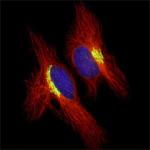
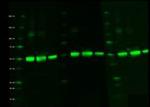
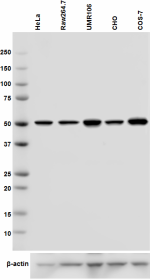
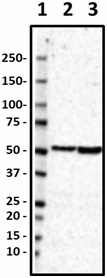



Follow Us